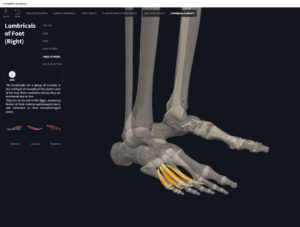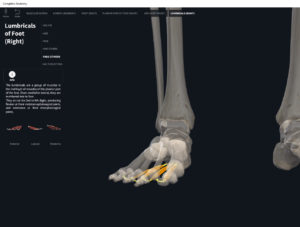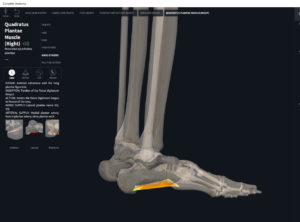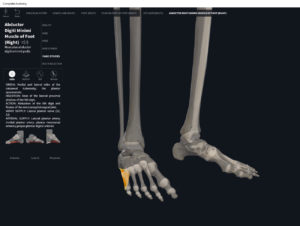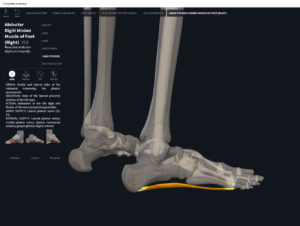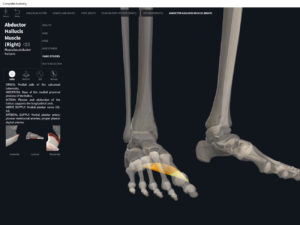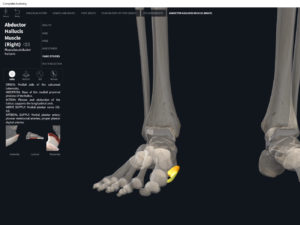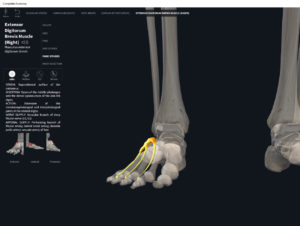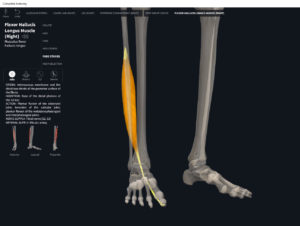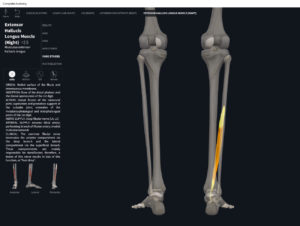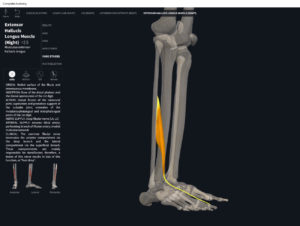Anatomy & Physiology: Muscles—Lumbricals Pedis.
Structure.
- Origin: tendons of flexor digitorum longus.
- Insertion: tendons of extensor digitorum longus on proximal phalanges of toes II-V.
Function.
- Concentric action: extends toes II-V at interphalangeal and metatarsophalangeal joints.
- Reverse mover action: flex metatarsals at MTP; extend proximal phalanges at PIP and DIP.
- Eccentric action: controls/restrains/decelerates flexion at PIP and DIP; extension of MTP.
- Isometric action: stabilize MTP, PIP, DIP.
- Innervation: medial and lateral plantar nerves.
- Arterial supply: medial and lateral arteries, plantar arch.
Clinical Significance.
More.
- https://www.anatomynext.com/lumbricals-of-foot/
- https://www.youtube.com/watch?v=yeQ3R16AZgk
- https://www.youtube.com/watch?v=5AwzFvFRKn4
- https://www.youtube.com/watch?v=QKbA9RSIhmw
References
Biel, A. (2015). Trail guide to the body: A hands-on guide to locating muscles, bones and more.
Clark, M., Lucett, S., Sutton, B. G., & National Academy of Sports Medicine. (2014). NASM essentials of corrective exercise training. Burlington, MA: Jones & Bartlett Learning.
Jenkins, G., & Tortora, G. J. (2012). Anatomy and Physiology: From Science to Life, 3rd Edition International Stu. John Wiley & Sons.
Muscolino, J. E. (2017). The muscular system manual: The skeletal muscles of the human body.
